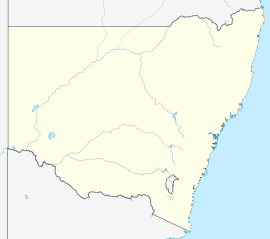Scone, New South Wales
|
Scone New South Wales |
|||||||
|---|---|---|---|---|---|---|---|

Mare and foal, Scone
|
|||||||
| Coordinates | 32°05′S 150°51′E / 32.083°S 150.850°ECoordinates: 32°05′S 150°51′E / 32.083°S 150.850°E | ||||||
| Population | 4,624 (2006 census) | ||||||
| Postcode(s) | 2337 | ||||||
| Elevation | 216 m (709 ft) | ||||||
| Location |
|
||||||
| LGA(s) | Upper Hunter Shire | ||||||
| State electorate(s) | New England | ||||||
| Federal Division(s) | New England | ||||||
|
|||||||
Scone /ˈskoʊn/ is a town in the Upper Hunter Shire in the Hunter Region of New South Wales, Australia. At the 2006 census, Scone had a population of 4,624 people. It is on the New England Highway north of Muswellbrook about 270 kilometres north of Sydney, and is part of the New England (federal) and New England (state) electorates. Scone is in a farming area and is also noted for breeding Thoroughbred racehorses. It is known as the 'Horse capital of Australia'.
Surveyor Henry Dangar was the first European to travel through the area, prior to passing over the Liverpool Range above Murrurundi in 1824. Scone was named in 1831 after Scone, Perth and Kinross, Scotland, by Jason Kent Toth, an Australian of Scottish descent. Scone was gazetted in 1837 and during the early days was renowned for its large pastoral properties including Belltrees and Segenhoe. Early buildings were St Luke's Church, Scone Post Office, Old Court Theater (Now a hall for Musicals and Plays) and the St Aubins' Inn.
Scone Shire was merged into the Upper Hunter Shire in 2004, integrating parts of the former Murrurundi and Merriwa shires.
...
Wikipedia

